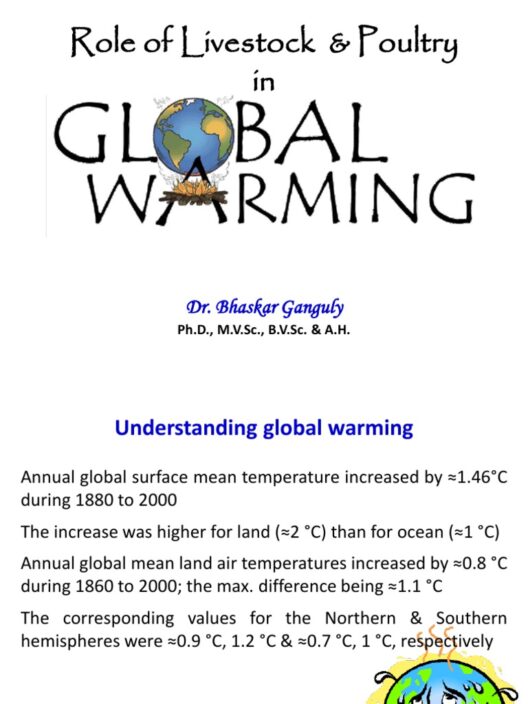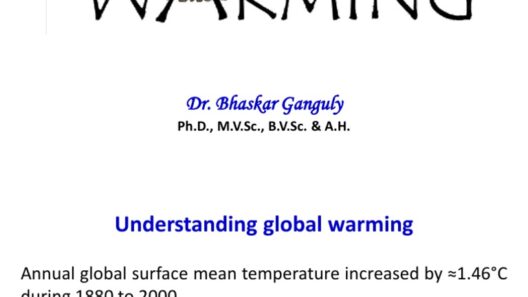Global warming is akin to a hidden maestro orchestrating a symphony, where each note resonates through the climate system, one instrument at a time, altering the harmonious balance of nature. As temperatures ascend, the water cycle—the age-old rhythm of evaporation, condensation, and precipitation—finds itself on a startling trajectory. Understanding this transformation requires navigating through multiple threads that intertwine the atmosphere, oceans, and weather patterns. The impact of global warming on the water cycle and ocean evaporation is profound, reverberating through ecosystems and human societies alike.
Central to comprehending these changes is the notion of evaporation—an essential phase within the water cycle, where liquid water ascends into the atmosphere as vapor. Global warming accelerates this process. As average global temperatures rise, the kinetic energy of water molecules increases, prompting a more vigorous transition from liquid to gas. The heightened evaporation rates serve as a catalyst for myriad effects—escalating humidity, altering rainfall patterns, and intensifying storms.
The implications of heightened evaporation are manifold. First and foremost, more water vapor in the atmosphere, a potent greenhouse gas itself, exacerbates warming. This occurrence creates a feedback loop that perpetuates the cycle. Picture a pot of water on a stove: as the heat increases, the water boils vigorously, releasing steam. Similarly, the Earth’s surface warming prompts more water vapor to escape into the atmosphere, further amplifying the greenhouse effect. This phenomenon is particularly concerning because it can lead to severe weather events and altered ecosystems.
Moreover, intensified evaporation can exacerbate regional disparities in water availability. Drier areas may become increasingly parched, straining local resources and transforming fertile lands into arid landscapes reminiscent of desert expanses. Conversely, regions prone to excessive precipitation may experience ruthless flooding, rendering once-stable communities vulnerable. This shift in precipitation dynamics can precipitate conflicting scenarios—a paradox where some regions thirst while others drown.
Diving deeper into the oceanic realm, we observe the critical role of the seas in the water cycle. Oceans are vast reservoirs, housing over 97% of Earth’s water, and they play a pivotal role in regulating climatic conditions. They absorb a significant portion of the carbon dioxide produced by human activities, but as global warming progresses, this capacity wanes. Warmer waters not only hold less dissolved oxygen and carbon dioxide but also intensify evaporation, which further influences atmospheric conditions. The interconnectedness of these factors orchestrates a cascade of changes that ripple across marine ecosystems.
When oceans warm, they also become less efficient at creating the necessary conditions for cloud formation. The reduced presence of cool water catalyzes the development of cloud cover, leading to altered weather patterns. Consequently, the impact can extend beyond the immediate coastal regions and affect distant lands, as storms shift paths and weather patterns become increasingly erratic. This variability demands adaptability from both ecosystems and human infrastructures that are relying on established behaviors of the climate system.
Moreover, as ice sheets and glaciers retreat due to rising temperatures, the influx of freshwater into saltwater systems not only disrupts salinity levels but also alters ocean currents. These currents, like a sophisticated conveyor belt, serve to regulate temperatures across the globe. Should they falter, the effects can be catastrophic, leading to further climate anomalies and extreme weather events. An example of this is the Atlantic Meridional Overturning Circulation, which plays a pivotal role in distributing heat in the north Atlantic. Disruption to such systems can precipitate a dramatic cooling in certain regions, even amidst a globally warming climate.
Additionally, stagnant conditions resulting from increased evaporation can enhance the frequency and severity of droughts. Ecosystems develop resilience to fluctuations, but these unprecedented shifts poise serious risks to agriculture—a bedrock for human survival. Crops vulnerable to drying minds struggle to flourish under these new regimes, which in turn compromises food security and exacerbates socioeconomic inequities.
In the grand tableau of global warming, the implications of altered evaporation and the water cycle extend beyond environmental dimensions; they intertwine with profound social ramifications. Marginalized communities often bear the brunt of these changes, given their limited capacity to adapt—whether through infrastructure, financial resources, or technological advancements. Climate-induced migration becomes a salient issue, as people are forced from their homes due to rising waters or dwindling resources. This human aspect of climate change interjects urgency into the conversation, demanding a unified global response.
In conclusion, the symphony of the water cycle is undergoing an unprecedented transformation as it dances to the tune of global warming. The ramifications are far-reaching, embroiling ecosystems, coastal communities, and agricultural stability. Recognizing the intricate web of these relationships is vital for effective policy-making and resilience strategies. While the challenges posed by climate change might seem overwhelming, every note of this symphony is a call to action. In addressing global warming’s impact on evaporation and the water cycle, humanity has the opportunity to compose a new code of sustainability, one that harmonizes economic growth with environmental stewardship, ensuring a flourishing planet for future generations.








